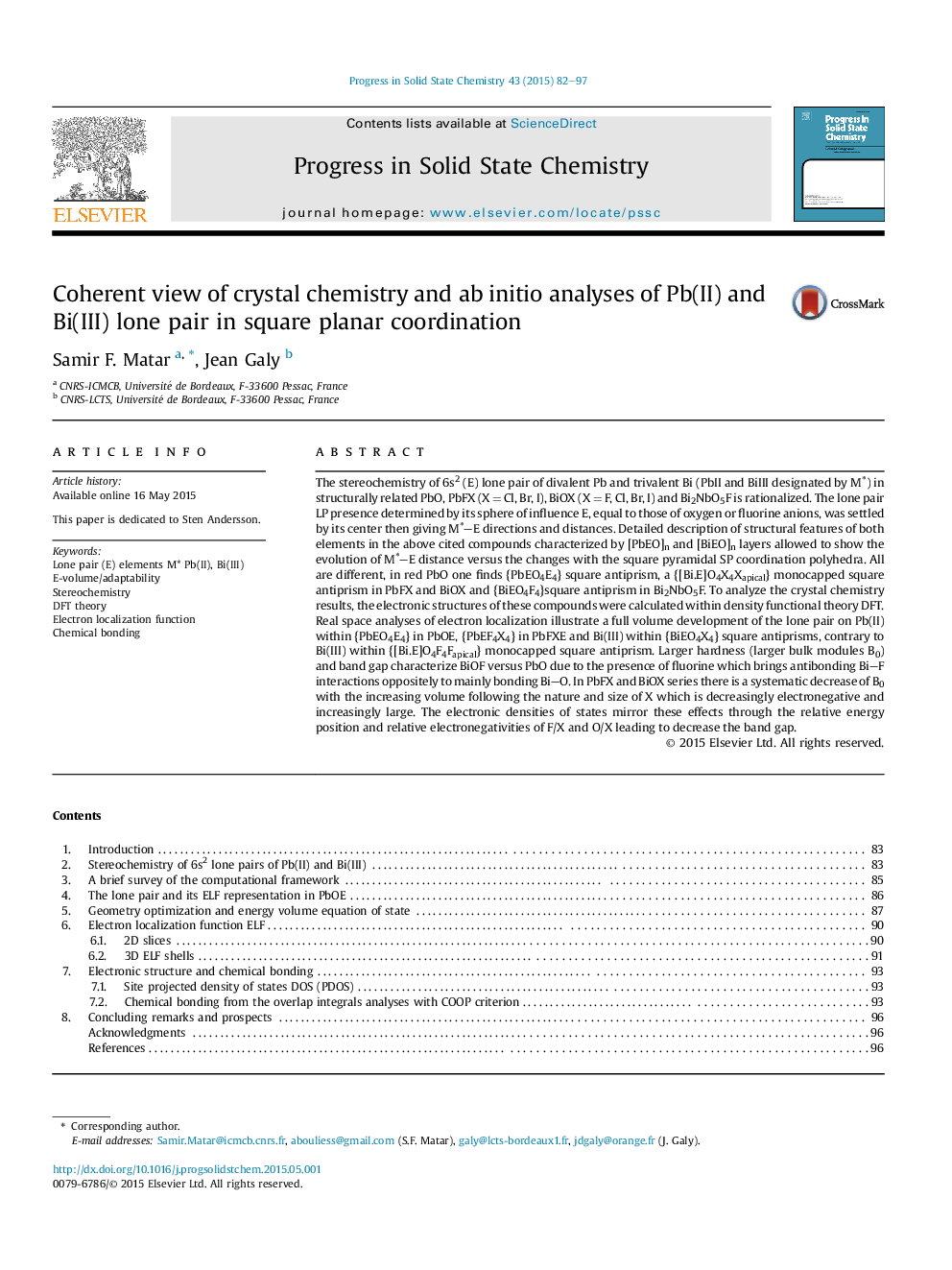| کد مقاله | کد نشریه | سال انتشار | مقاله انگلیسی | نسخه تمام متن |
|---|---|---|---|---|
| 1497814 | 993113 | 2015 | 16 صفحه PDF | دانلود رایگان |

The stereochemistry of 6s2 (E) lone pair of divalent Pb and trivalent Bi (PbII and BiIII designated by M∗) in structurally related PbO, PbFX (X = Cl, Br, I), BiOX (X = F, Cl, Br, I) and Bi2NbO5F is rationalized. The lone pair LP presence determined by its sphere of influence E, equal to those of oxygen or fluorine anions, was settled by its center then giving M∗–E directions and distances. Detailed description of structural features of both elements in the above cited compounds characterized by [PbEO]n and [BiEO]n layers allowed to show the evolution of M∗–E distance versus the changes with the square pyramidal SP coordination polyhedra. All are different, in red PbO one finds {PbEO4E4} square antiprism, a {[Bi.E]O4X4Xapical} monocapped square antiprism in PbFX and BiOX and {BiEO4F4}square antiprism in Bi2NbO5F. To analyze the crystal chemistry results, the electronic structures of these compounds were calculated within density functional theory DFT. Real space analyses of electron localization illustrate a full volume development of the lone pair on Pb(II) within {PbEO4E4} in PbOE, {PbEF4X4} in PbFXE and Bi(III) within {BiEO4X4} square antiprisms, contrary to Bi(III) within {[Bi.E]O4F4Fapical} monocapped square antiprism. Larger hardness (larger bulk modules B0) and band gap characterize BiOF versus PbO due to the presence of fluorine which brings antibonding Bi–F interactions oppositely to mainly bonding Bi–O. In PbFX and BiOX series there is a systematic decrease of B0 with the increasing volume following the nature and size of X which is decreasingly electronegative and increasingly large. The electronic densities of states mirror these effects through the relative energy position and relative electronegativities of F/X and O/X leading to decrease the band gap.
Journal: Progress in Solid State Chemistry - Volume 43, Issue 3, September 2015, Pages 82–97